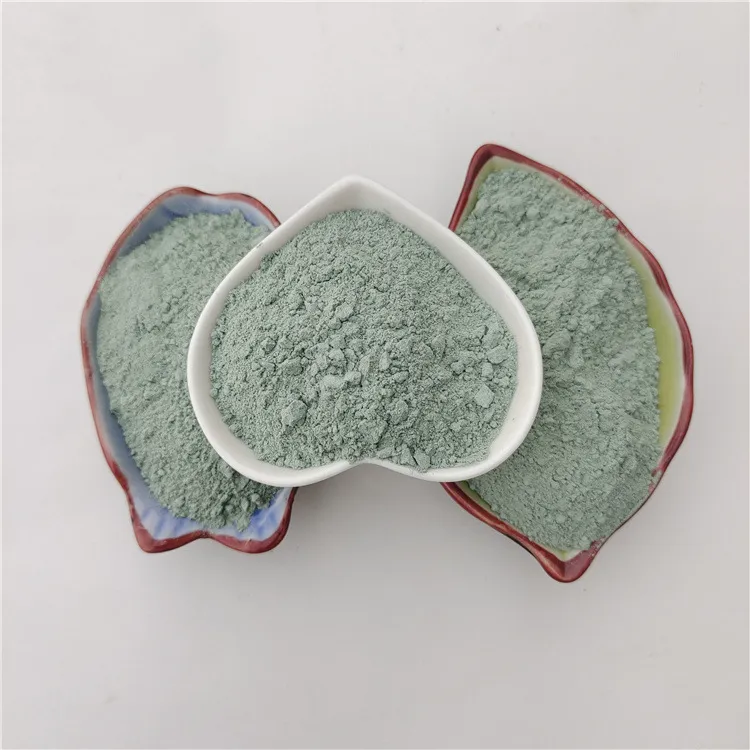
high purity silicon carbide
High Purity Silicon Carbide The Future of Advanced Materials
Silicon carbide (SiC) has emerged as a critical material in various high-tech applications due to its unique properties, including high thermal conductivity, exceptional hardness, and outstanding chemical inertness. Among its variants, high purity silicon carbide has garnered considerable attention, particularly in sectors such as electronics, optics, and advanced ceramics. This article delves into the characteristics, production methods, and applications of high purity silicon carbide.
Characteristics of High Purity Silicon Carbide
High purity silicon carbide is characterized by its low levels of impurities, typically below 0.1%. This purity ensures superior performance in sensitive applications where material defects can lead to catastrophic failures. The material exhibits a wide bandgap of approximately 3.0 eV, which allows it to operate in high-temperature and high-voltage environments, making it particularly suitable for semiconductor applications.
Additionally, high purity silicon carbide possesses remarkable mechanical properties, including high hardness and strength. This makes it ideal for abrasive applications and for use in high-performance cutting tools. The outstanding thermal stability and resistance to thermal shock further enhance its usability in demanding environments, enabling its adoption in aerospace, automotive, and defense industries.
Production Methods
The manufacturing of high purity silicon carbide involves several sophisticated techniques designed to minimize impurities and ensure the desired crystalline structure. One widely used method is the chemical vapor deposition (CVD) process, which allows for the growth of high purity SiC crystals on appropriate substrates. During CVD, silicon-containing gases are introduced into a reaction chamber, where they react to form a thin film of silicon carbide on the substrate. The control of temperature, pressure, and gas compositions is crucial in obtaining high purity crystals.
Another prevalent method is silicon carbide sintering, which typically employs high-purity silicon and carbon powders as raw materials. The powders are subjected to high pressures and temperatures in a controlled environment to form dense silicon carbide ceramics. Techniques such as hot pressing and reaction bonding are commonly utilized to enhance the density and purity of the final product.
high purity silicon carbide

Regardless of the production method, handling and processing of high purity silicon carbide require stringent controls to prevent contamination
. This includes using cleanroom environments and specialized equipment to minimize exposure to contaminants during each stage of production.Applications of High Purity Silicon Carbide
The unique attributes of high purity silicon carbide have led to its application across a wide range of industries. In the electronics sector, it plays a crucial role in developing power devices, including MOSFETs and Schottky diodes. These devices benefit from the high thermal conductivity and efficiency of SiC, allowing for smaller, lighter components that can operate at higher voltages and temperatures compared to traditional silicon devices. This capability is driving the use of SiC in electric vehicles and renewable energy systems.
In the realm of optics, high purity silicon carbide is increasingly used in the production of mirrors and lenses for high-temperature applications. Its low thermal expansion coefficient and hardness make it an ideal choice for space telescopes and other demanding optical systems where stability and precision are essential.
Moreover, the advanced ceramics industry leverages high purity silicon carbide for its outstanding mechanical properties. It serves as a key ingredient in cutting tools, grinding wheels, and protective equipment, providing enhanced performance and durability.
Conclusion
High purity silicon carbide is at the forefront of materials science, driving innovation across multiple sectors. Its exceptional properties make it indispensable in electronics, optics, and advanced ceramics, among others. As industries continue to pursue higher efficiency, durability, and performance, the demand for high purity silicon carbide is likely to grow. Continued advancements in production techniques and research into novel applications will further cement its role as a material of choice for the future. With ongoing developments, high purity silicon carbide is poised to revolutionize modern technology and contribute significantly to emerging trends in materials engineering and nanotechnology.
Share
-
Premium Glass Sand Solutions | High Purity SupplyNewsAug.03,2025
-
Premium Talcum Powder Enhanced with GPT-4 Turbo | Soft & Long-LastingNewsAug.02,2025
-
Fly Ash Solutions Enhanced by GPT-4 Turbo | Sustainable InnovationNewsAug.01,2025
-
Natural Premium Bentonite Cat Litter - Superior ClumpingNewsJul.31,2025
-
Premium Resin Coated Sand - High Heat Resistance CastingNewsJul.31,2025
-
High Quality Silicon Carbide Grit for Abrasive ApplicationsNewsJul.30,2025






